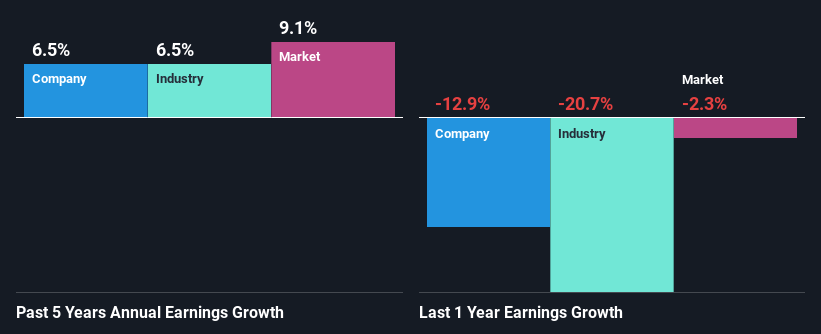Is Sabre Insurance Group plc's (LON:SBRE) Latest Stock Performance Being Led By Its Strong Fundamentals?
Sabre Insurance Group's (LON:SBRE) stock up by 4.1% over the past three months. Given that the market rewards strong financials in the long-term, we wonder if that is the case in this instance. Particularly, we will be paying attention to Sabre Insurance Group's ROE today.
ROE or return on equity is a useful tool to assess how effectively a company can generate returns on the investment it received from its shareholders. In short, ROE shows the profit each dollar generates with respect to its shareholder investments.
See our latest analysis for Sabre Insurance Group
How Is ROE Calculated?
The formula for ROE is:
Return on Equity = Net Profit (from continuing operations) ÷ Shareholders' Equity
So, based on the above formula, the ROE for Sabre Insurance Group is:
15% = UK£40m ÷ UK£266m (Based on the trailing twelve months to December 2020).
The 'return' is the amount earned after tax over the last twelve months. So, this means that for every £1 of its shareholder's investments, the company generates a profit of £0.15.
What Is The Relationship Between ROE And Earnings Growth?
We have already established that ROE serves as an efficient profit-generating gauge for a company's future earnings. Depending on how much of these profits the company reinvests or "retains", and how effectively it does so, we are then able to assess a company’s earnings growth potential. Assuming everything else remains unchanged, the higher the ROE and profit retention, the higher the growth rate of a company compared to companies that don't necessarily bear these characteristics.
Sabre Insurance Group's Earnings Growth And 15% ROE
To begin with, Sabre Insurance Group seems to have a respectable ROE. Further, the company's ROE compares quite favorably to the industry average of 9.9%. Probably as a result of this, Sabre Insurance Group was able to see a decent growth of 6.5% over the last five years.
We then performed a comparison between Sabre Insurance Group's net income growth with the industry, which revealed that the company's growth is similar to the average industry growth of 6.5% in the same period.
Earnings growth is an important metric to consider when valuing a stock. The investor should try to establish if the expected growth or decline in earnings, whichever the case may be, is priced in. By doing so, they will have an idea if the stock is headed into clear blue waters or if swampy waters await. What is SBRE worth today? The intrinsic value infographic in our free research report helps visualize whether SBRE is currently mispriced by the market.
Is Sabre Insurance Group Making Efficient Use Of Its Profits?
The high three-year median payout ratio of 70% (or a retention ratio of 30%) for Sabre Insurance Group suggests that the company's growth wasn't really hampered despite it returning most of its income to its shareholders.
Besides, Sabre Insurance Group has been paying dividends over a period of three years. This shows that the company is committed to sharing profits with its shareholders. Upon studying the latest analysts' consensus data, we found that the company's future payout ratio is expected to rise to 91% over the next three years. Regardless, the ROE is not expected to change much for the company despite the higher expected payout ratio.
Summary
In total, we are pretty happy with Sabre Insurance Group's performance. Especially the high ROE, Which has contributed to the impressive growth seen in earnings. Despite the company reinvesting only a small portion of its profits, it still has managed to grow its earnings so that is appreciable. The latest industry analyst forecasts show that the company is expected to maintain its current growth rate. Are these analysts expectations based on the broad expectations for the industry, or on the company's fundamentals? Click here to be taken to our analyst's forecasts page for the company.
This article by Simply Wall St is general in nature. It does not constitute a recommendation to buy or sell any stock, and does not take account of your objectives, or your financial situation. We aim to bring you long-term focused analysis driven by fundamental data. Note that our analysis may not factor in the latest price-sensitive company announcements or qualitative material. Simply Wall St has no position in any stocks mentioned.
Have feedback on this article? Concerned about the content? Get in touch with us directly. Alternatively, email editorial-team (at) simplywallst.com.

 Yahoo Finance
Yahoo Finance 
